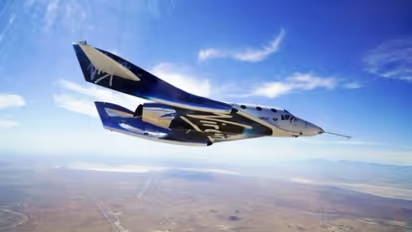Huge setback for Virgin Galactic as US grounds its flights over pending mishap probe

Synopsis
Virgin Galactic may not fly the SpaceShipTwo vehicle again until the FAA accepts the final accident investigation report or decides that the concerns linked to the disaster do not endanger public safety.
The US Federal Aviation Administration (FAA) prohibited Virgin Galactic from flying its SpaceShipTwo on Thursday unless the agency approved its final crash investigation report from its July flight or determined that the concerns did not endanger public safety.
On Wednesday, the FAA acknowledged that it was looking into a deviation in the descent of the Virgin Galactic rocket jet that sent British entrepreneur Richard Branson to the edge of space. The FAA, in charge of public safety during commercial space transportation launch and reentry, stated that "SpaceShipTwo strayed from its Air Traffic Control clearance when it returned to Spaceport America" in New Mexico.
Also Read | Richard Branson’s Virgin Galactic to sell tickets to space starting at $450,000
According to the agency, Virgin Galactic may not fly the SpaceShipTwo vehicle again until the FAA accepts the final accident investigation report or decides that the concerns linked to the disaster do not endanger public safety.
Virgin Galactic responded to the FAA announcement by saying it was "addressing the sources of the issue and identifying how to avoid this from occurring on future trips."
According to the firm, the diversion in the July mission known as Unity 22 was "a deliberate and planned flight route that allowed Unity 22 to reach space and safely land at our Spaceport in New Mexico Passengers and staff were never in any danger."
According to Virgin Galactic, "the flight did fall below the height of the airspace... for a short length and time (1 minute and 41 seconds)." Virgin Galactic announced on Wednesday that it was preparing another SpaceShipTwo mission from New Mexico, with a flying window in late September or early October, subject to technical tests and weather. According to the announcement, the trip will include three crew members from the Italian Air Force and the National Research Council.
Also Read | Virgin Galactic's Richard Branson to launch himself into space today; power the next space age
On the July trip, Branson was one of six Virgin Galactic workers, which soared more than 50 miles (80 kilometres) over the New Mexico desert. He had billed the trip as a forerunner to a new space tourism era, and he stated that the business he created in 2004 would begin commercial operations next year.